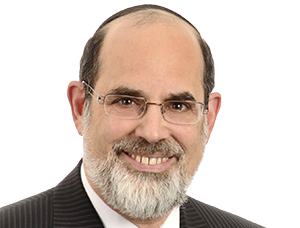The Governor General is not alone in questioning the Creation narrative, but such
skepticism can invite dialogue and the exploration of ideas from different perspectives.
Rabbi Raysh Weiss
Shaar Shalom Congregation, Halifax
Rabbi Debra Landsberg
Temple Emanu-El, Toronto
Rabbi Lansdberg: “Can you believe that still today in learned society … we are still debating and still questioning whether life was a divine intervention or whether it was coming out of a natural process, let alone – oh my goodness, lo and behold – random process?”
With these words, Gov. Gen. Julie Payette sparked a national conversation. It is one that is not new to many of us, I imagine. In fact, I’ve had several thoughtful, respectful bar mitzvah students steel their nerve to ask me something similar.
“Rabbi, you’re intelligent,” they begin. “How can you believe this?”
Rabbi Weiss: While I found the Governor General’s words disappointingly dismissive of Canada’s different faith communities, I am relieved to live in a country where such a sentiment evokes immediate public reproach. In light of the global increase in public expressions of anti-Semitism, I am less concerned about Payette’s low-stakes comment, which reductively misunderstands the intellectual complexity of religious belief.
Moreover, I see a fundamental difference between such a statement and someone – whether a bar/bat mitzvah student, adult congregant or simply an acquaintance – trying to engage me in a dialogue. In that same vein, our Passover Haggadah encourages us to engage earnestly and thoroughly with the wise child. The “How can you believe this?” moments are invitations for dialogue thinly veiled as challenges. As rabbis, our task is to unpack the beautiful nuance and complexity of the “this.”
Rabbi Lansdberg: My answer to bar mitzvah students is one I first came to via Danny Matt’s God and the Big Bang: Discovering Harmony Between Science and Spirituality. It is a simple thought experiment: if a botanist and a poet were to describe a rose, their words would seem a universe apart, as if they were each not looking upon the very same thing. And yet, a rose is a rose is a rose.
To say that there is only one dimension in life is, well, one-dimensional. It doesn’t begin to acknowledge the kaleidoscope of perspectives by which we understand our all too finite life. Where I daven, Temple Emanu-El, we are a glorious cacophony of those who tremble before God, romantic atheists, spiritual seekers, rationalist agnostics, loving traditionalists, theists and those who would claim none of these labels – yet all are part of Am Yisrael. What they share is the knowledge that the soul is nourished by more than the eye can see or the scientist can measure.
That a person is religiously inclined does not tell us anything about where they stand on the scientific questions of the day. To assume that religious sensibility and opposition to scientific discovery are linked is a mistake. And more than that, it seems terribly far from empiricism that, after millenniums of humanity making sense of life through poetry, religion and myth, one should find this pursuit surprising. Man does not live by bread alone, nor is dry rationalism all a man needs to understand his place under the heavens and the stars.
Rabbi Weiss: The danger of benighted thinking ultimately lies in neither science nor religion, but in thinking benightedly. We can’t reduce any system of thought to a simplistic, reductive binary – we think in binary terms when we submit ourselves to literalism. Thankfully, our tradition rejects this way of thinking, even and especially as we interpret our most sacred text.
In the entire Jewish spectrum, no one is slavishly taking the Bible literally. The great Rabbi Joseph Soloveitchik’s book The Lonely Man of Faith is an extended meditation on the differences between the apparently varying accounts of Creation presented in the first couple of chapters of Genesis. Rabbi Soloveitchik suggests approaching these narratives as one would a Picasso painting, with two contradictory things happening at the same time, or how deconstructionists look at literature. Using this approach to the narrative, we are able to read the Bible, including the very Creation narrative itself, as a most inspired poem.
To take the eternal truth of the Torah seriously means to read it non-literally. Such nuance is lost on many unfamiliar with our tradition. And as we both well know, countless other faith traditions around us also leave ample room for belief in science and the scientific method. Allowing for multiple methods of making sense of our often-confusing world is an important step in achieving clarity and mutual understanding and respect.






